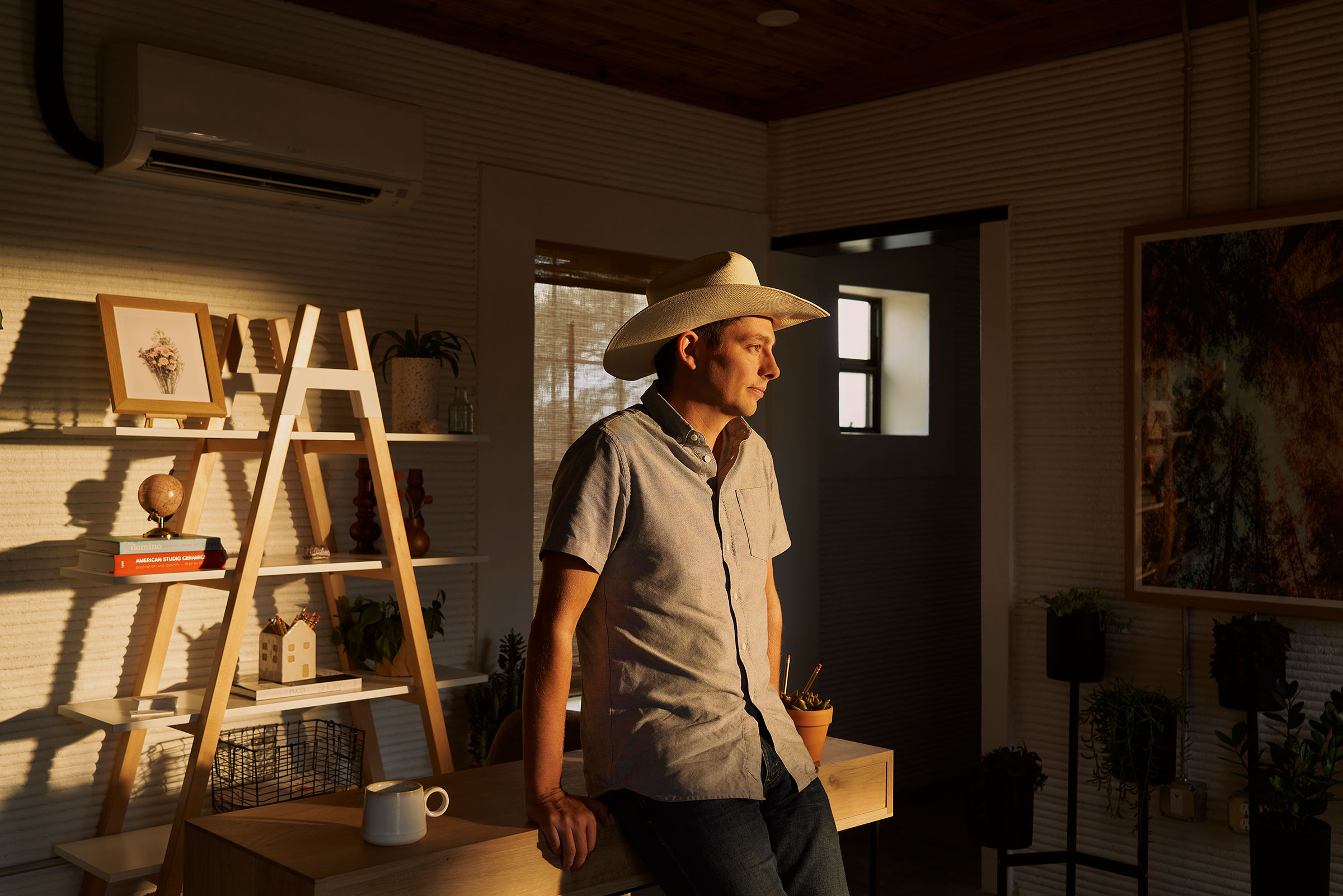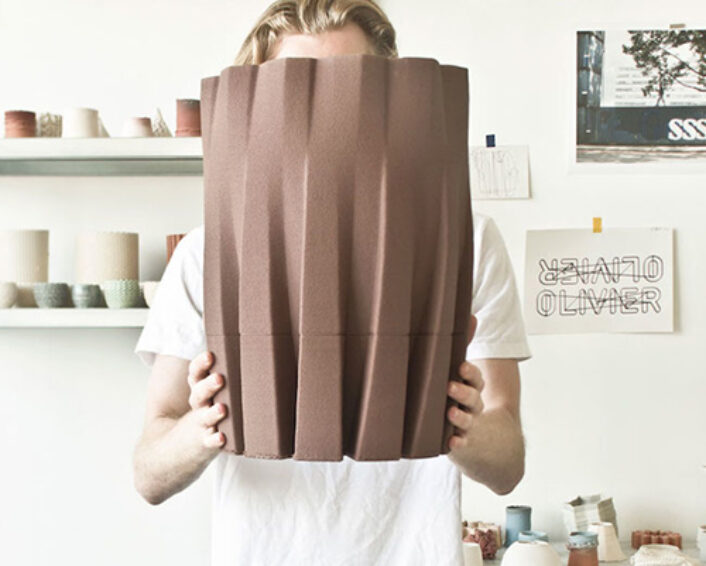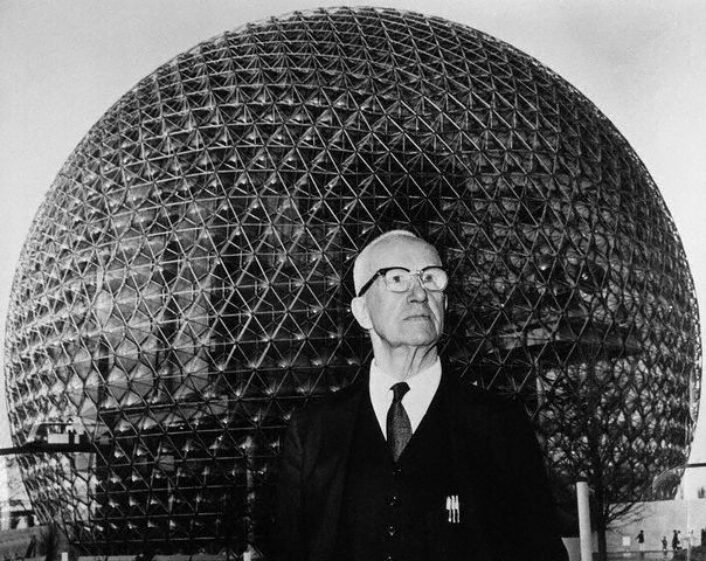Architecture
Jason Ballard and building 3-D printed homes as affordable housing solutions

Jason Ballard- “Building for the future.”
Image courtesy of: TIME, photographed by: Philip Cheung
Jason Ballard has spent his life working on solving problems that have evaded us. The Texan with a big accent and Stetson hat is a conservation biologist. Presently however, he can add construction-technology pioneer to his resume. Ballard is co-founder and CEO of ICON, a construction technologies company that uses construction-scale 3-D printing to tackle the global housing crisis.
His company, ICON, has been named as one of the “Most Innovative Companies in the World” and Ballard himself was listed on TIME’s list of emerging leaders shaping the future. About the honor, he wrote on his site, “I am honored to be recognized in the 2021 TIME 100 Next and was quite deeply moved to find that Bjarke Ingles took the time to write such kind words about this work. We are creating these advanced construction technologies in the belief that they can advance humanity. All of my work is in the hope that not only can we use ICON’s technology to solve great problems, but that this technology will open the path to some of our grandest opportunities.”
Vulcan’s first structure cost $4,000 to build and 48 hours to complete. The Vulcan printer was on TIME’s 2018 list for best inventions; it is described as a 3-D way to end homelessness.
Image courtesy of: Dwell
ICON initially made headlines in 2018 when their Vulcan 3-D printer built a 350-square-foot in 48 hours. Thanks to the Vulcan printer, the process was actually quite easy… this revolutionary machine constructs the home’s basic concrete structure layer by layer using a fraction of the material and labor costs of traditional construction methods.
ICON spent nine months developing the printer; soon after it debuted, $9 million was raised to improve functionality. The hope was that the machine would be able to print a 2,000-square-foot home in just 24 hours. Understanding the need for collaboration, ICON joined together with New Story, a housing not-for-profit focused in the Caribbean and Latin America, to bring Vulcan to regions in need of sound and inexpensive housing solutions.
The Vulcan prints walls, layer by layer, using a mortar specifically designed for this purpose.
Image courtesy of: Dwell
ICON has raised $59 million (as of the first quarter of 2021) and it continues to establish higher and higher benchmarks for delivering presentable homes at a low cost and high speed. Over the past three years, ICON has built 3-D printed homes both in the U.S. and internationally. In addition, they have established relationships with well-known architects and builders who are also concerned with affordable housing and homelessness.
The 2017 collaboration with New Story was instrumental in finding innovative ways to put a roof over the heads of more families. ICON focused on designing 3-D printing technology specifically for the developing world and two years later, the team found a solution in the accessibility of Vulcan. Weighing 2,000 pounds, the printer is able to print on-site, continuously. In addition, Vulcan’s mobility is vital since a location’s weather, product availability, and site characteristics vary profoundly.
A 3-D printed home with curved walls.
Image courtesy of: ArchDaily
It was important for Ballard that the house be desirable; he explains that he also “wanted to show off a few possibilities that are opened up with 3D printing.” Employing curves and other non-typical 3-D printing shapes was important. No longer does “customized” have to translate to slow and expensive. One of the first homes of this style was rectangular-shaped but it has two curved corners giving it an interesting exterior. On top of the exterior walls sits a clerestory window that brings in a lot of light and it is topped off with a cantilevering shed roof that creates a charming wraparound porch.
The house construction created virtually zero waste and it incorporates many sustainable features such as solar panels and energy-efficient appliances. It is fortunate that the printing material’s cement mixture (developed by ICON especially for these needs) is composed of materials that are easily accessible throughout the world.
The Vulcan II printer. Ballard envisions a future where everyone can build a custom home. He says, “This isn’t science fiction.”
Image courtesy of: m3 design
In 2020, ICON completed seven 3-D printed homes in Austin and there is so much on the horizon. Constance Freedman who sits on ICON’s board said, “Traditional building and construction techniques have not improved since B.C., they have only become more expensive. The results are vast deltas in affordability, limitations on design and both time and efficiency challenges. I believe we will see an evolution of the entire home-buying value chain, especially when integrated with other technologies like digital transactions and augmented reality. Consumers will be able to order, build, design and purchase a brand-new home in a matter of days — something that’s truly innovative and truly disruptive.”
Last fall, the Air Force (including funding from NASA) awarded ICON a research contract to begin research and development of housing on the moon and beyond. It is possible that Ballard’s dream will allow him to be the first human to build a 3-D printed structure for the moon. If there’s anyone who can do it, Ballard is the guy for the job!


